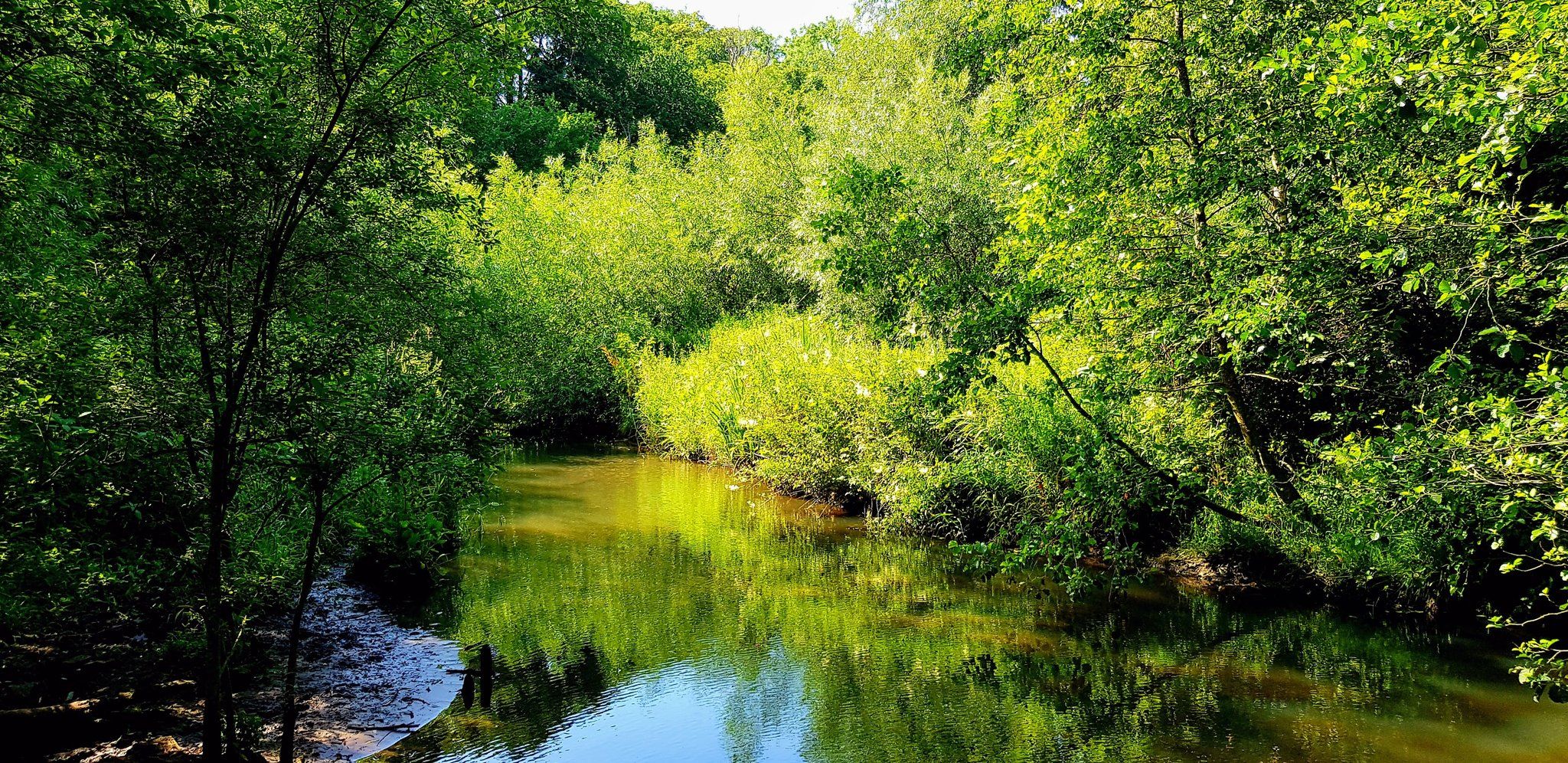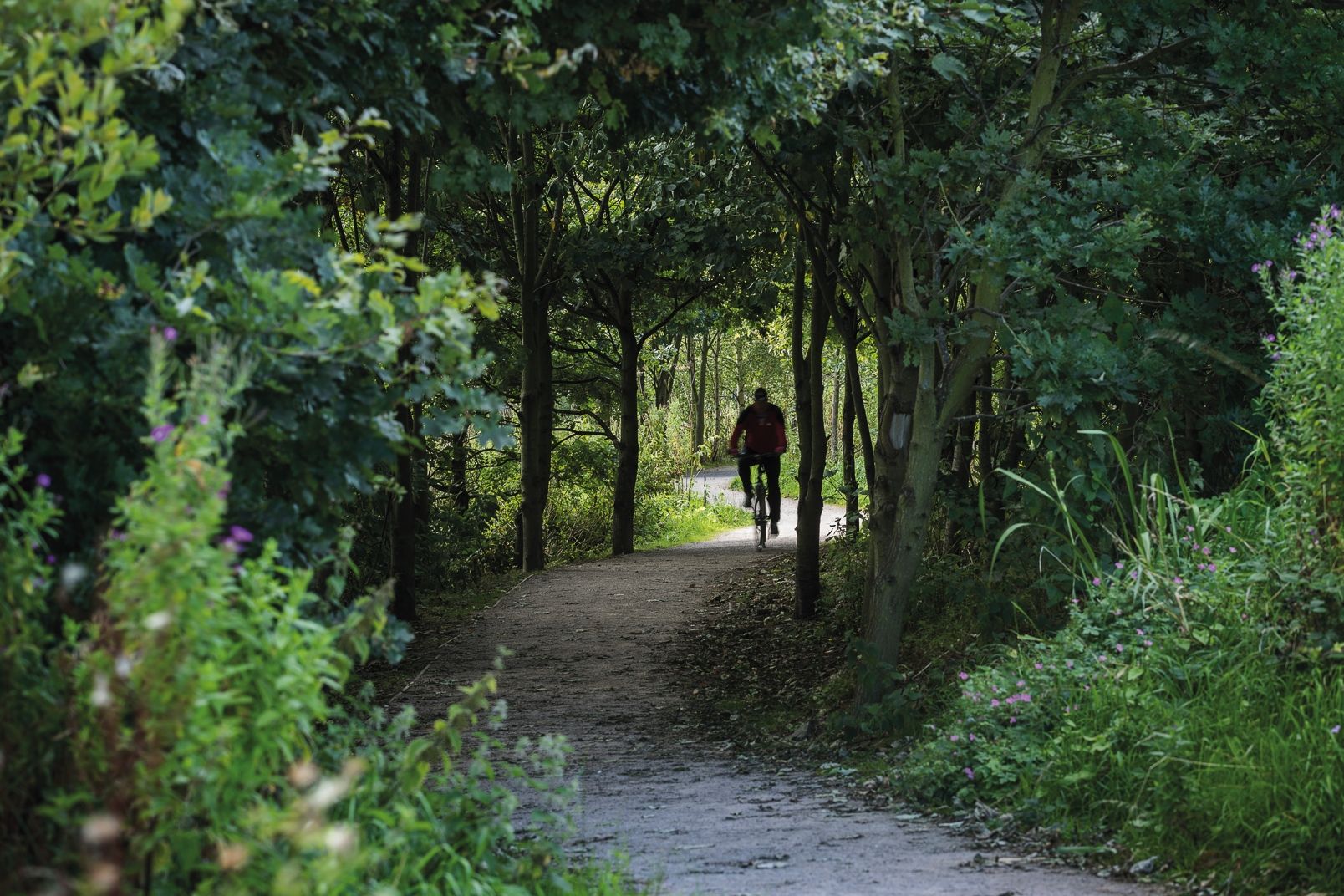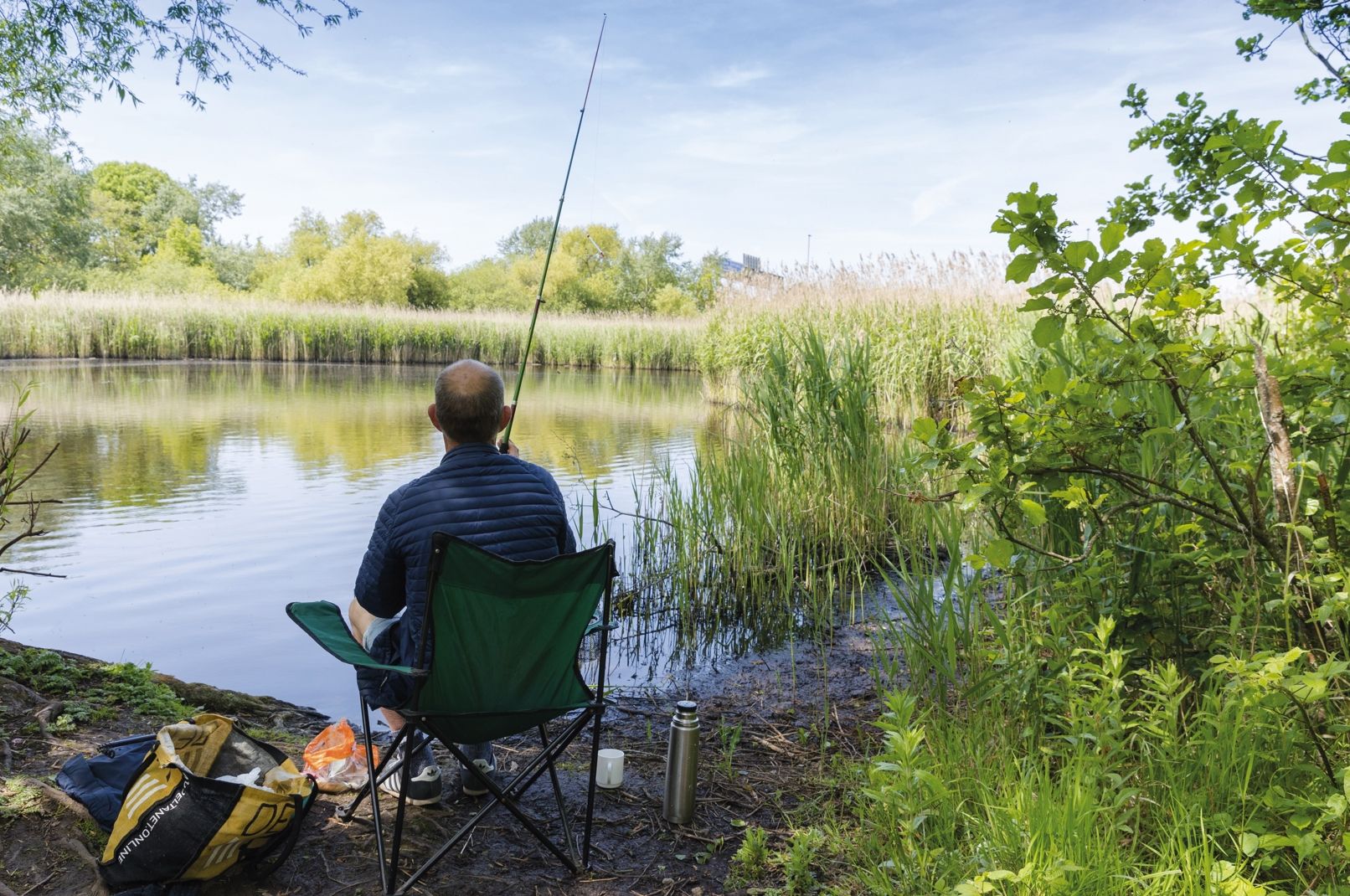If you could dream up the perfect post-industrial landscape, which is entirely fit for purpose, it would surely look something very much like Port Sunlight River Park.
Once a Biffa landfill heap rising to 125 feet, it marred the riverside residents’ Mersey view. Now, the scene couldn’t be more different.
There’s something incredibly disarming, then all-at-once redeeming, when, in a fraction of a second, you swerve to avoid flattening a stray ball of fluff underfoot… only to find it move like a living being.
Looking closer, you see a quivering young shrew sheltering on what he thought was a peaceful, out-of-the-way path, just a metre from a reeded marsh.
Catching your breath as you consider your miniature friend’s near-untimely, and cruel, demise at your hands (or, in this case, size fives), you hear reed warblers warble and coots rustle their reprimand by the water’s edge, while a skylark spirals upwards in ignorant bliss.
This super-natural, emotionally enlivening scene is all the more enigmatic when you consider where you are, and what this precise grid reference would have looked like only two short decades ago.
Port Sunlight River Park (PSRP), perched on a steep bank of the Mersey, where it meets the once-flowing-but-now-trickling River Dibbin, has emerged as a real treat for nature lovers, dog walkers, Brownie packs, gardening groups and anyone seeking peace and quiet for an hour or so.

But where now you can lose yourself in its winding white shale paths lined with a heady mix of flowering elders, billowy reed beds, trembling grasses, ox-eye daisies and fragile orchids, at the beginning of the Millennium you would have found… well, just trash.
A mountain of trash, no less, as this former landfill site, still owned by neighbouring Biffa, reached a peak of 125 feet in the 1990s. It still retains its mountain status, as the signs, pointing to the ‘Summit’ – known to locals as Cardiac Hill – promise uninterrupted views across the Mersey to that inexorable Liverpool city skyline.
Get up there, and you will, indeed, be rewarded. Where else can you see container ships coming and going, the rooftops of a city, a brace of world-class football stadiums (one fine one still in construction)… while listening to larks, lapwings and water rail?
Park Warden Eric Joinson accompanies us on our intriguing, unique and almost surreal journey to the top. Pointing out the flora and fauna that grows on this soil (much of it donated by local residents), there are some surprises… bird’s foot trefoil, bugleweed, forget-me-nots, wild poppies.
We even come across a hardy sweet pea, most probably a remnant of a Spital back yard. “Obviously, you might come across the occasional old mattress spring that pops through the soil,” Eric chirps. “That can be a bit confusing. But you have to remember, this is a moving landscape.
"The rubble is still bedding down (only very incrementally, we have to add). It’s just all part of the experience and the pleasure – you never know what you’re going to find or see.”
We’re all familiar with artists’ impressions, creative visions for turning brown belt into fantastical dreamscapes, filled with unspecified shrubs, wonderful water features, bleached walkways and the odd urban sculpture added in for good measure.
Rarely does the reality match up to the proposal. But in the case of Port Sunlight River Park, this 34-hectare patch of reclaimed land, developed in 2014 through Biffa Award funding in partnership with green space management charity the Land Trust, is now managed day-to-day by the Trust in partnership with managing agents The Conservation Volunteers (employers of Warden Eric).
It has risen miraculously and magnificently – from the rubble that lies beneath. It has been perfectly, and cleverly, created to offer a genuinely lovely environment for the hardworking people of Port Sunlight, Bromborough, Spital and Eastham Rake to wander and throw away their cares.
Birds, water fowl, insects and wild animals like our sheltering shrew, have found a habitat to thrive. Hidden ponds add a new dimension, and a destination for migrating swifts, holidaying here from Africa, as well as shelducks, Canada geese, the shy water rail (you can hear them squeaking like tiny pigs, but will be hard pressed to spot) and reed warblers, who make their nests in the reeds.
Then there are the skylarks and lapwings – sadly in decline across the UK – plus an encouraging number of wrens and a smattering of kestrels (sheltering shrews beware).

As part of the cleverness of this new, upcycled landscape, you’ll also come across a number of metal stumps at regular intervals along the pathways of the community trail. These are gas monitoring points, where Biffa officers come to measure the levels of gas building up under the vegetation, in the landfill below.
The gas will be siphoned off accordingly, and re-used to generate electricity for the national grid. Crucially, this also means the soil on the site is perfectly clean. So you can have your blackberries and eat them.
There is absolutely no disappointment here in Port Sunlight, of course, as Friends of PSRP volunteer, Linda Maguire, is first to point out.
Having moved to nearby Bromborough from High Wycombe in leafy Buckinghamshire, she has become a regular visitor to the park since 2016, using it as a much-needed escape from the fast pace of suburban life.
“This is my sanity,” says Linda as she lovingly waters a sapling silver birch. “You can just see what nature can do. Never in a million years would you think this was once an unsightly rubbish tip, but it just goes to show how things can change, with a little creative thought and community effort.”
Eric, as the warden, loves not just the environment, but the successful way that Port Sunlight River Park has brought the community together, offering a space that promotes education as well as wellbeing.
“People come mainly to relax in our safe areas; whether they want to wander around and check out the wildlife, climb Cardiac Hill or simply sit and do some sketching, they’re benefitting both mentally and physically.
“They like to get involved, too, so we have the volunteers who come along every Wednesday – a group of around eight to ten – and help us maintain the pathways, build hedges, cut back the reeds and generally keep the place neat and tidy for others to enjoy.
"Anyone can come and join in, by the way, so just turn up and you’ll find us here.”
The Heritage Centre, with café and kiosk run by local community integrated enterprise Autism Together, provides a welcome and a place for friends to meet up. You might need a breather, anyway, if you’re to tackle Cardiac Hill.
“It’s a bit of a thigh-burner at the end,” says Eric. “But well worth the view.”
“You just try pushing a wheelbarrow up there!” Linda cuts in.
Dock Road North, Bromborough, CH62 4TQ
Visit the Land Trust website to find out more about the park
Not to be Bypassed

Bidston Moss was once home to the great Veolia household waste recycling centre, whose own landfill mountain evolved from residential, commercial and industrial waste.
Once diminishing the mid-Wirral horizon, since 1994 it’s been transformed into a well-used and popular community nature reserve, walking trail and cycle route.
There’s a triangle of ground between the M53, A554 and River Birket that many an East/West Wirral commuter will recognise. Not always fondly, it has to be said.
As you plough along (watching your speed – yes, we’ve all been caught out just here), the only points of interest you might see are the sprawl of graffiti on the bypass bridge, the desolate metal footbridge of Bidston railway junction and the tops of the retail units at B&Q.
No wonder everyone picks up their speed. (There’s Bidston Hill, of course, topped by its observatory and windmill. So it’s not all bad.)
Yet what the motorist might not know at this precise point is that, beyond the scrubby and unremarkable stretch of railway line, there lies a wild, wonderful and sequestered patch of land that the locals just love.
A combined effort between Merseyside Waste Disposal Authority and Groundwork Wirral, a charitable trust, Bidston Moss Nature Reserve was landscaped from landfill in 1995 to give residents around Bidston, Leasowe and Birkenhead North an outlet for leisure.
Its main attraction: a licence-free fishing lake holding carp, tench, bream and eels, that’s a place to sit and contemplate, observe passing birds and see the ducks dipping in and out of the reed-bound waters.
Originally a low-lying wetland marsh at the head of Wallasey Pool, Bidston Moss has been restored to its natural environment of wetland and woodland around the periphery of the landfill. Now, it has the added (and glorious) extra of a central upland.
The route skirts around the Birket, following boardwalks and concrete paths that pass under and over bridges before you get, first to the lake, then on to the higher viewing stations. It’s an interesting post-industrial walk, pointing out graffiti and other urban artworks that feature along your way.
Views soaked up and summit reached, the final descent then takes you down to Veolia’s recycling plant, where you can catch your train back from Birkenhead North.
Bidston Moss Park, Wallasey, CH44 2ET
Learn more about the Newlands project on their website
Winging it

What do you do with a defunct railway sidings, rundown coal yard and disused water softening plant? Open up a butterfly park, of course.
As urban nature reserves go, New Ferry Butterfly Park is perhaps one of the most charming as well as diverse.
Its insalubrious beginnings as part of New Ferry and Bebington stations, is actually the reason for it being such a rich habitat for wild insects and, especially, the more elusive butterflies.
“Sadly the numbers have dropped off recently,” Conservation Officer Hilary Ash says, “as they have all over England.
“But on a sunny summer afternoon, the Park is buzzing with bees, hoverflies, grasshoppers and, yes, even some butterflies!”
Because of its varied industrial past, the soil is a mix of acidic (from the coal dust areas), calcareous (from the lime waste of the water softening plant), nutrient-poor (from the old railway track beds) and, occasionally, naturally nutrient-rich.
Each attracts its own inherent vegetation now that the land has been set free. Grassland, hedgerow, scrub, hazel coppice, pond life on the damper ground, it’s all here. And it attracts the butterflies and bees.
As many as 27 different species of butterfly have been recorded at New Ferry, with up to 18 species breeding on site. Comma, brimstone, gatekeeper and speckled wood are all common sightings. On the lower pond, smooth newts and dragonfly nymphs abound.
Yellow meadow ants are attracted to the undisturbed grassland areas, where they can build their nests, while large populations of grasshoppers, bees and shield bugs appear to be proud to call this two-hectare Local Wildlife Site on Howell Road, adjacent to Bebington station car park, home.
New Ferry Butterfly Park (managed by the Cheshire Wildlife Trust) is only open Sunday afternoons between May and September, and could be closed if the weather is very wet, windy or hot, so take a look at the New Ferry Butterfly Park Facebook page before you go.
In fact, take a look at the Facebook page anyway, as visitors and local photographers will post quite spectacular sightings to give you a flavour of what you might find – the most memorable recent post of an up-close and very personal fight between two orange-vented mason bee (Osmia leaiana) males.
With their magnificent mandibles on show, this was a horror movie in the making, but all the more fabulous for it.
“There is something about the Butterfly Park that attracts so many people,” Hilary says. “Maybe because it is small enough to be safe and friendly, but big enough for a variety of wildlife.
"It’s a special place for me. I love showing people around.”
Howell Road. New Ferry, CH62 5BJ
Find out more on the Butterfly Park's website
Image credits: Giles Rocholl (courtesy of Gillespies), Martin Travis, Jonathan Keenan and Jane MacNeil